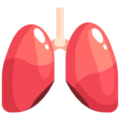Author(s)
Stefanie C. Nigro, PharmD, BCACP, BC-ADM
Angela M. Thompson, PharmD, BCPS
Reviewed By
Kathy E. Komperda, PharmD, BCPS
Stuart T. Haines, PharmD, BCPS, BCACP
Persons diagnosed with a psychiatric disorder consume nearly half of all cigarettes smoked in the United States! Moreover, they are at higher risk for premature death, especially from vascular disease and cancer.1 Smoking cessation efforts are paramount in this population but often more challenging. Clinical practice guidelines firmly endorse pharmacotherapy — combined with cognitive behavioral therapy — be offered to all patients willing to quit smoking.2 Seven first-line therapies have shown to increase long-term abstinence rates, with bupropion sustained release (SR) doubling and varenicline tripling the odds of quitting.2 Despite the effectiveness of these agents, the FDA issued black box warnings3,4 in 2009 regarding increased neuropsychiatric events and suicidality with bupropion and varenicline use. Thus many clinicians have been reluctant to prescribe these agents in persons with mental illness.
Refuting these warnings, several large systematic reviews and meta-analyses failed to show an association between varenicline or bupropion use and neuropsychiatric adverse events — not only in patients with no history of mental illness but also in patients with a diagnosed psychiatric disorder.5-7 A comparative efficacy study – comparing non-nicotine therapies to nicotine replacement therapy in smokers with mental illness — was sorely needed.
The Evaluating Adverse Events in Global Smoking Cessation Study (EAGLES) was a randomized, blinded, placebo-controlled trial that took place at 140 sites across 16 countries.8 The study was requested by the FDA and sponsored by the makers of bupropion and varenicline. Current smokers between the ages of 18-75 years of age who smoked an average of 10 or more cigarettes per day over the previous year were enrolled. Patients meeting DSM-IV-TR diagnostic criteria for mood disorders were included in the psychiatric cohort (n = 4116) if the condition was clinically stable and the patient was considered to not be at high-risk of self-injury or suicidal behavior. Patients not meeting diagnostic criteria were included in the non-psychiatric cohort (n = 4028). Patients were further stratified by region as well as by psychiatric cohort (non-psychiatric, psychiatric mood, psychiatric anxiety, psychiatric psychotic, and psychiatric personality disorders).
Patients were randomized in a 1:1:1:1 ratio to receive varenicline titrated to 1 mg twice daily, bupropion SR titrated to 150 mg twice daily, transdermal nicotine patch 21 mg per day with taper, or placebo in a triple-dummy design. Patients were given 12 weeks of therapy followed by 12 weeks of non-treatment. Quit dates were set for 1 week after randomization at which point titration of bupropion and varenicline was complete and the transdermal nicotine patch was initiated. Smoking cessation counseling was provided to all participants at each clinic visit.
The primary safety outcome was a composite measure of 16 moderate to severe neuropsychiatric symptom categories and included all volunteered, observed, and solicited neuropsychiatric adverse events during active treatment or within 30 days after discontinuing treatment (See TABLE 1). Secondary safety outcomes included individual neuropsychiatric adverse events that were rated as severe, all adverse events, vital signs, and select laboratory values. The primary efficacy endpoint was the continuous abstinence rate for weeks 9-12 based on patient report and exhaled carbon monoxide concentrations less than 10 ppm.
Table 1. Moderate and severe neuropsychiatric symptom categories for the primary outcome
|
Moderate and Severe intensity |
Severe intensity |
||
|
Agitation |
Homicidal ideations |
Psychosis |
Anxiety |
|
Aggression |
Mania |
Suicidal behavior |
Depression |
|
Delusions |
Panic |
Suicidal ideation |
Feeling abnormal |
|
Hallucinations |
Paranoia |
Completed suicide |
Hostility |
Of the 8,144 patients randomly assigned, 3,984 received treatment in the non-psychiatric cohort and 4,074 in the psychiatric cohort. Both groups had similar baseline characteristics. Most patients had a long duration of tobacco abuse (~ 28 years), high nicotine dependence (~21 cigarettes/day) and several previous quit attempts (~3). There were more females and those with higher nicotine dependence in the psychiatric cohort.
For the primary safety outcome, the overall incidence of neuropsychiatric events was similar among the four treatment groups (varenicline 4%, bupropion 4.5%, nicotine patch 3.9%, placebo 3.7%). The risk of neuropsychiatric events was not increased in any treatment group when compared to placebo in either the non-psychiatric cohort or the psychiatric cohort (See TABLE 2). Significantly more neuropsychiatric events were experienced in the psychiatric cohort; however, not surprisingly, psychiatric events were higher in the psychiatric cohort across all treatment groups at baseline. Neuropsychiatric events that were of severe intensity were reported more often in the psychiatric cohort but similar across all treatment groups; the same is true for suicidal ideation or behavior. Nausea was the most frequently reported adverse effect in the varenicline-treated group, insomnia with bupropion, abnormal dreams with nicotine patch, and headache with placebo.
Table 2. Primary safety and efficacy endpoints
|
Primary composite neuropsychiatric endpoint |
|||||||
|
Non-psychiatric cohort (n= 3984) |
Psychiatric cohort (n=4074) |
||||||
|
Varenicline (n= 990) |
Bupropion (n= 989) |
NRT patch (n=1006) |
Placebo (n=999) |
Varenicline (n= 1026) |
Bupropion (n= 1017) |
NRT patch (n=1016) |
Placebo (n=1015) |
|
13 (1.3%) |
22 (2.2%) |
25 (2.5%) |
24 (2.4%) |
67 (6.5%) |
68 (6.7%) |
53 (5.2%) |
50 (4.9%) |
|
Total = 84/3984 (2.1%)* |
Total = 238/4074 (5.8%)* |
||||||
|
Primary efficacy endpoint weeks 9-12 |
|||||||
|
Non-psychiatric cohort (n= 4028) |
Psychiatric cohort (n=4116) |
||||||
|
Varenicline (n= 1005) |
Bupropion (n= 1001) |
NRT patch (n=1013) |
Placebo (n=1009) |
Varenicline (n= 1032) |
Bupropion (n= 1033) |
NRT patch (n=1025) |
Placebo (n=1026) |
|
38.0%#†‡ |
26.1%# |
26.4%# |
13.7% |
29.2%#†‡ |
19.3%# |
20.4%# |
11.4% |
NRT = Nicotine replacement therapy
* statistically significant difference p<0.0001
# statistically significant difference vs. placebo p<0.001
† statistically significant difference vs. bupropion p<0.001
‡ statistically significant difference vs. NRT patch p<0.001
For the primary efficacy outcome, varenicline achieved higher quit rates when compared to placebo, nicotine patch, and bupropion in both patient cohorts at the end of treatment and after 24 weeks of follow-up (p<0.0001 for all comparisons). Bupropion had similar efficacy to the nicotine patch and both were superior to placebo in both patient cohorts (See TABLE 2).
While the EAGLES trial is perhaps the most robust smoking cessation trial ever conducted, it is not without limitations. Patients were only included in the psychiatric cohort if the condition was treated and stable or in remission. Additionally, those with substance use disorders were included but only if this was secondary diagnosis to a qualifying psychiatric condition. Given the high prevalence of comorbid substance and tobacco abuse, this restriction is disappointing. While the overall study population was very large, certain cohorts, such as those with personality disorders, were quite small. In addition, the study was not sufficiently powered to detect differences in rare events such as suicide. The patients included in this study were closely followed for 24 weeks, which likely does not mimic real world smoking cessation attempts in most primary care settings. As this study was a post-marketing requirement for the manufacturers of varenicline and bupropion, Pfizer and GlaxoSmithKline funded the study, and employees designed and assisted in all aspects of the study.
Even with limitations, the results have significant clinical implications and should reassure clinicians. First, the conclusions of EAGLES validate previous findings that varenicline use achieves higher abstinence rates than bupropion or nicotine patch.5-7,9 All three agents are more effective than placebo, reaffirming current guideline recommendations.2 Second, both varenicline and bupropion substantially increased the odds of quitting in patients with stable psychiatric illnesses and the rates of abstinence was similar in the psychiatric and non-psychiatric cohorts. This is a welcomed finding as previous studies have suggested that those with mental illness have more difficulty quitting.10 Lastly, and most importantly, both bupropion and varenicline appear safe to use in smokers with stable psychiatric illnesses. The results substantiate the findings from previous observational studies and meta-analyses.5-7 More neuropsychiatric events were indeed observed in the psychiatric cohort; however, the incidence of neuropsychiatric events in the three active treatments groups was similar to the placebo group. This suggests that neuropsychiatric events may be provoked by smoking cessation and are not related to the medication used. Based on the growing body of evidence, do you feel comfortable recommending bupropion and varenicline to those with mental illness? Do you think the FDA should remove the black box warnings?
- Lasser K, Boyd JW, Woolhandler S, Himmelstien DU, McCormick D, Bor DH. Smoking and mental illness: a population-based prevalence study. JAMA 2000;284:2606-10.
- Fiore MC, Jaen CR, Baker TB, et al. Treating Tobacco Use and Dependence: 2008 Update. Rockville, MD: U.S. Department of Health and Human Services, Public Health Service; 2008.
- Zyban ® [package insert]. Research Triangle Park, NC; GlaxoSmithKline; 2016.
- Chantix ® [package insert]. New York, NY: Pfizer Inc.; 2014.
- Hughes JR. Stead LF, Hartmann-Boyce J, Cahill K, Lancaster T. Antidepressants for smoking cessation. Cochrane Database of Systematic Reviews 2014, Issue 1. Art No.:CD000031
- Gibbons RD, Mann JJ. Varenicline, smoking cessation, and neuopsychiatric events. Am J Psychiatry. 2013;170:1460-67.
- Thomas KH, Martin RM, Knipe DW, Higgins JPT, Gunnell D. Risk of neuropsychiatric adverse events associated with varenicline: systematic review and meta-analysis. BMJ. 2015;350:h1109
- Anthenelli RM, Benowitz NL, West R, et al. Neuropsychiatric safety and efficacy of varenicline, bupropion, and nicotine patches in smokers with and without psychiatric disorders (EAGLES); a double-blind, randomized placebo-controlled trial. Lancet 2016;387; 2507-20.
- Molero Y, Lichtenstein P, Zetterqvist J, et al. Varenicline and risk of psychiatric conditions, suicidal behavior, criminal offending, and transport accidents and offences: population based cohort study. BMJ. 2015; 253: h2388.
- Addington J, el Guebaly N, Campbell W, Hodgins DC, Addington D. Smoking cessation treatment for patients with schizophrenia. Am J Psychiatry. 1998;155:974-76.






 iForumRx.org is a web-based community of practice designed to inform ambulatory care pharmacy specialists, pharmacy residents, and student pharmacists about high-quality, practice-changing evidence.
iForumRx.org is a web-based community of practice designed to inform ambulatory care pharmacy specialists, pharmacy residents, and student pharmacists about high-quality, practice-changing evidence.